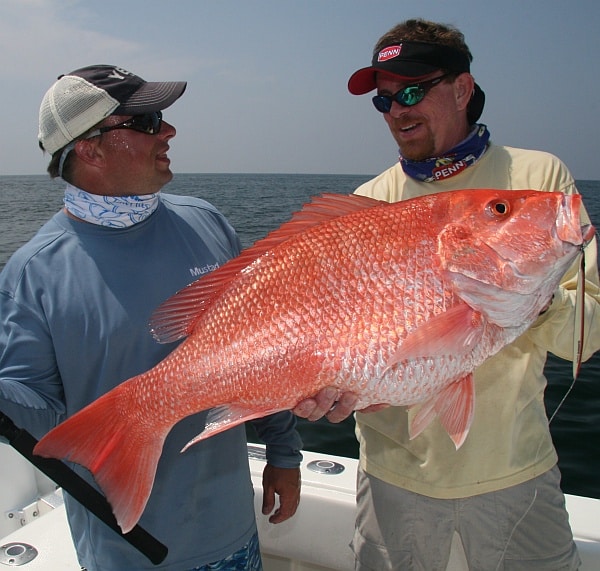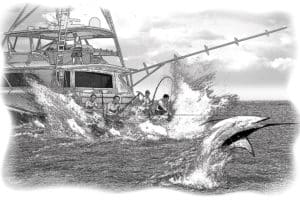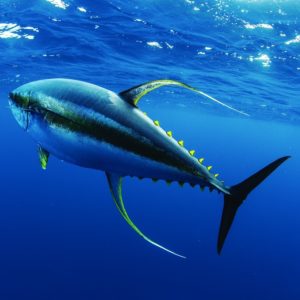
Gulf of Mexico red snapper
The unending red snapper saga in the Gulf of Mexico continues, proving exactly how valuable fish populations are to southeastern coastal states.
Down here, recreational and commercial fishermen battle each other for strict catch quotas set by NOAA Fisheries (NMFS).
In July of this year, the Gulf of Mexico Fishery Management Council voted to increase the 2013 red snapper total quota from 8.46 million pounds (mp) to 11 mp. Split between the two groups, commercial fishermen received 5.610 mp and recreational anglers were handed 5.390.
From an outsider’s perspective, that seems fair, right? Both fishing groups received about 50 percent of the pot, and both bumped up from last year’s totals. In 2012, commercial fishermen were allocated 4.121 mp and recreational anglers 3.959 mp.
Internally, it’s a completely different story.
Neither side likes the harsh regulations put forth on them by government fish regulators. And neither side is sympathetic to the other’s position. TV media likes to portray the causes of recreational and commercial fishing as similar, but a quick fact-check shows that they are world’s apart.
Behind the Recreational Powerhouse
Recreational fishing as a whole is an economic juggernaut when compared to commercial fishing’s limited value. According to the American Sportfishing Association in 2012:
- Saltwater landings by anglers contributed three times more to the national gross domestic product (GDP, or value-added) than commercial landings.
- The recreational sector added $152.24 in value-added, or GDP, for one pound of fish landed, compared to the commercial sector’s $1.57 for a single pound of fish.
- For every 100,000 pounds landed there were 210 recreational fishing jobs but only 4.5 jobs in the commercial fishing industry.
Even with obvious economic potency to back them, many recreational red snapper anglers feel like they are being prohibited from a natural resource — and at the expense of commercial fishermen. Some go further, saying that fish regulators from the Gulf Council are allowing red snapper to be privatized for special interests.
Seasonal Squeeze
About 400 milion anglers have saltwater licenses from Gulf states, allowing them to target red snapper this year. That’s according to statistics from NOAA Fisheries’ National Saltwater Angler Registry Program. Those same millions of anglers had less than one month to target red snapper, which ran from June 1 to June 28. During the season, only two fish measuring 16 inches or greater could be kept per person.
Accounting for weather blowouts and actual days on the water, there’s a good chance that many Gulf anglers won’t see a red snapper this year. For those that did make it out in June, it’s unlikely they were able to fill up the quotas. Not surprisingly, there’s talk of an extra season in October.
Playing by Different Rules
Commercial red snapper fishermen view their position in a completely different light, even if they benefit from current practices.
The relatively small commercial sector is not bogged down by seasonal restrictions and 16-inch minimums. They are managed under an individual fishing quota (IFQ) program that allows them to fish all year long. The program is made up of 407 IFQ shareholders, with catch limits divided via allocation and permitting processes.
Still, in early July, commercial fishermen and associated businesses filed a lawsuit against the federal government “to address its failure to effectively manage the Gulf of Mexico red snapper fishery.”
According to the complaint, the [National Marine Fisheries Service] mismanaged the fishery by failing to implement “adequate measures to control catches by the recreational fishing sector.” Inadequate controls have permitted the recreational sector to routinely catch far more red snapper than it is allocated under the current management plan, reads the lawsuit.
“The agency’s mismanagement of Gulf red snapper poses a real threat to the commercial businesses – fishermen, fish houses, distributors, restaurants – that are dependent on red snapper and our ability to meet rising consumer demand for red snapper,” said Buddy Guindon, a commercial red snapper fisherman from Galveston, Texas. “We hoped to avoid litigation, but the agency left us with no choice.”
Where to Go from Here
National fishing group Coastal Conservation Association vows to intervene on behalf of recreational anglers.
“This lawsuit was filed by a select few commercial fishermen who profit from the sale of this resource, and they are seeking greater restrictions on the recreational angling sector to protect their privileged position,” said Chester Brewer, chairman of CCA’s National Government Relations Committee.
“It is unfortunate that it is again necessary for us to engage in legal action to prevent recipients of exclusive commercial fishing rights from using the courts to further restrict or potentially eliminate public access to these recreational fisheries. We cannot afford to ignore the threat that this lawsuit poses to all recreational anglers. An elite and privileged class of commercial harvesters cannot be allowed to dictate how recreational fisheries are managed.”
And so the battle wages on for a single fish species in the south, with sides so distant there might as well be a gulf between them.







